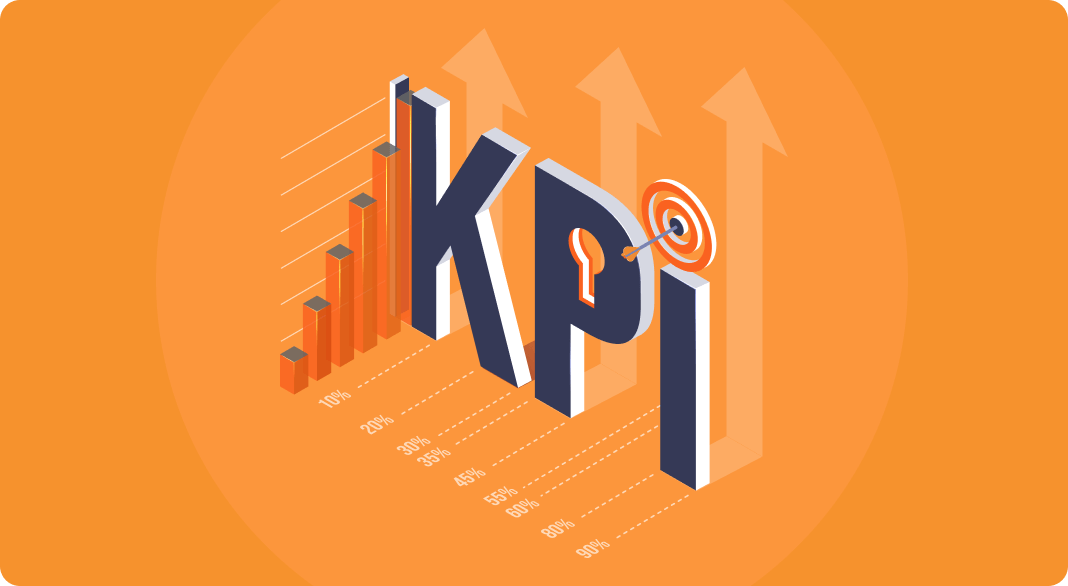Startup Cash Runway: Navigating Challenges in Tech
Discover how startups extend their cash runway amidst capital tightening. Explore sector trends, expense reduction strategies, and remote...

This article delves into the vital role of Key Performance Indicators (KPIs) in software development, exploring their potential to measure and enhance team performance and goal attainment. It discusses how understanding the project's technical and business facets can guide in setting precise KPIs, emphasizing the significant contribution of Agile methodologies.
It further segregates software development metrics into development phase KPIs, maintenance phase KPIs, and satisfaction metrics, while considering their respective benchmarks. The balance between technical metrics and business goals, crucial to maximizing IT investment returns, also finds significant mention.
Mastering Key Performance Indicators (KPIs) in software development can feel akin to scaling a formidable peak. It's a tangible challenge that separates novices from seasoned project managers. Are you baffled about measuring your team's performance and productivity? You're not alone! One tech lead confessed to navigating the labyrinth of software performance metrics, only to realize they weren’t aligned with their business objectives.
Now, he's apprehensive about trying again, worried that the secrets of effective KPI tracking will elude him throughout his developer career. The reality, however, is clear-cut. Without deciphering and applying the essential KPIs for software development, achieving excellence in project management remains a distant dream. It's a daunting, yet achievable expedition. Dive into the world of KPIs with us, as we demystify this journey.
Navigating the intricacies of software development can be daunting; however, KPIs are an effective tool for measuring team performance and success in achieving objectives. But, with the right tools like Key Performance Indicators (KPIs), you can easily measure your team's performance and effectiveness in achieving business objectives.
The process of setting specific KPIs for your software projects is not just about what to measure but also determining an appropriate benchmark for success. This becomes more intricate when dealing with outsourced teams due to factors such as geographical differences, cultural nuances, and varying work practices.
To effectively set up these essential metrics involves understanding both technical aspects and business goals associated with a project. While code quality or defect detection percentage might form part of technical metrics, customer satisfaction levels or return on investment (ROI) could focus on business-oriented ones.
A balanced mix ensures that while high standards are maintained during every stage - from initial design stages till post-release maintenance - there's also a clear path leading towards fulfilling overarching company objectives. Balancing Technical Metrics & Business Goals
In this context, Agile methodologies come into play. These frameworks emphasize continuous improvement through iterative cycles which align perfectly with measuring key performance indicators over time. This helps tackle outsourcing challenges head-on by promoting flexibility, transparency, and collaboration among geographically dispersed teams. Outsource Successfully Using Agile Methods.
This strategic alignment between technology efforts and corporate vision forms an integral part of modern-day IT strategy creation. It enables businesses to derive maximum value from their IT investments, ensuring they contribute directly towards growth targets.
Software development metrics are divided into three key areas: development phase KPIs, maintenance phase KPIs, and satisfaction metrics. The three distinct types of KPIs each have a distinctive part to play in the software development procedure.
The first category is your team's performance during the initial stages of software creation - this includes velocity, sprint burnout, and throughput among others. These specific KPIs help to measure code quality while also ensuring that any issues within the project lifecycle can be detected early on.
Maintenance phase KPIs come next; they ensure smooth operation post-software release by measuring lead time for changes or change failure rates. They're essential for maintaining high levels of code stability and minimizing downtime after a new software product has been launched.
Satisfaction metrics like Net Promoter Score (NPS) play an important part in understanding user experience with your developed products. This metric gauges customer loyalty based on their likelihood to recommend your product or service - making it invaluable when working towards business objectives such as improving customer effort score or overall client satisfaction ratings.
In addition to NPS, Employee Net Promoter Score (eNPS) measures employee engagement within your organization which directly impacts developer productivity amongst outsourced teams. A higher eNPS indicates greater morale leading to better results from developers involved in agile software projects. In essence, each type of metric provides valuable insights about different aspects associated with developing efficient yet top-quality software solutions whilst simultaneously meeting stakeholder expectations at all times.
Metrics are the guiding light in software development, providing invaluable context that helps pinpoint issues and boost team productivity. They're not just numbers on a screen; they're strategic tools steering your software development process towards achieving specific KPIs and business objectives.
Achieving measurable goals is like hitting the bullseye - it's 33 percent more likely to happen when you have metrics at play. This statistic isn't merely an impressive number; it underscores why setting quantifiable targets within your software projects matters significantly for successful project management.
In the world of coding, there are several key players worth tracking - code coverage, code stability, code simplicity, and 'code churn'. Each metric plays its part in painting a holistic picture of your overall performance.
'Code Coverage' measures how much ground unit tests cover across your entire source-code landscape while 'Code Stability' gauges whether new updates disrupt existing functionality or keep things running smoothly. On the other hand, 'Code Simplicity' assesses if developers can easily understand and modify the written lines without scratching their heads too often.
Then we come to 'code churn' - this essential metric keeps tabs on changes made over time to any given piece of source-code (additions or deletions). High rates might indicate turbulence within the development process whereas low rates suggest steady progress with fewer disruptions along the way.
Paying attention to these essential metrics doesn't only improve overall software quality but also contributes significantly towards business scalability by anticipating potential challenges ahead, allowing for proactive solutions rather than reactive firefighting.
In essence: choosing the right indicators = better decision making + increased ROI.

The realm of software development is increasingly data-driven. To stay ahead, it's crucial to harness the power of tools that can accurately track and visualize key performance indicators (KPIs). These insights offer a clear picture of your project's health and progress.
GitHub, more than just a code repository, has become an indispensable tool in many developers' arsenals. It offers integrations with numerous other platforms, allowing you to monitor pull requests, commits, and resolved issues directly from its dashboard.
In addition to GitHub, there are continuous integration systems like CircleCI or Bitrise. They automate testing processes every time there's a new commit by any developer on board. This instant feedback about build failures or test errors plays a significant role in maintaining high-quality code throughout the entire development process.
Apart from tracking data, Firebase Analytics provides robust reporting capabilities that help analyze user behavior within your application - giving valuable insight into how users interact with various features over time. Zapier also comes in handy when it comes to automating repetitive tasks between different web apps, thereby enhancing efficiency across teams.
These diverse range of tools not only measure but optimize team productivity based on reliable software metrics captured consistently over time.
In the realm of software development, aligning work with business objectives is more than just a good practice. It's an essential strategy that can drive developer productivity and improve overall team performance. DevOps Research and Assessment (DORA) supports this notion by emphasizing the role predictive measures play in shaping future actions based on past data.
The key to unlocking increased efficiency lies in these specific indicators. They provide quantifiable evidence for decision-making processes while helping prioritize tasks according to their impact on wider business goals.
A well-aligned workforce is often synonymous with high productivity levels. When developers see how their individual efforts contribute directly toward achieving larger organizational objectives, motivation tends to skyrocket.
This understanding allows them not only to comprehend why certain tasks hold importance but also enables them to take ownership over those assignments.
The result? More effort invested into completing tasks effectively - thereby increasing both personal output and collective team efficacy.
Beyond boosting individual productivity rates, strategic alignment using software KPIs enhances entire team performance as well.
In the vast universe of software development, code quality holds a position that's hard to overstate. It is this very factor that determines how your software product performs and evolves with time.
This brings us directly into the realm of defect detection percentage - an important metric in its own right. This indicator essentially measures what fraction of bugs or defects are identified during our development process before they get a chance to reach end-users.
Moving beyond mere defect detection, we encounter another crucial measure for assessing code quality: 'code churn'. At its core, it quantifies changes made in source codes over specified periods.
An insight into work patterns and efficiency levels within teams can be gleaned from studying this measure closely.
A high rate could potentially indicate issues such as indecisiveness or lackadaisical planning leading to repeated rewrites; both detrimental factors when considering project timelines and overall productivity.
Understanding KPIs for software development is a game-changer. They're the compass guiding your team's performance and productivity. Categorized into three, they offer insights at every phase of development. Satisfaction metrics? They're not just numbers but voices from your team and clients. Moving on to metrics, they are the lifeblood of successful project management. Essential ones like code stability or simplicity can be real difference-makers in software quality! You've got tools aplenty for tracking these vital signs - Jira, GitHub, CircleCI...the list goes on! KPIs aren't just about measuring work; they align it with business objectives too. Predictive measures help plan ahead and boost overall performance. And let's not forget code quality measures! Ever heard of defect detection percentage? It's an insight goldmine into how effective your process really is!
KPIs, or Key Performance Indicators, in software development are metrics used to gauge the effectiveness and efficiency of a team's coding efforts.
A KPI for a software platform might include user engagement levels, average session duration, churn rate, or conversion rates. These metrics help assess the platform's performance and usability.
The performance of a software development team can be measured using various KPIs such as code quality, sprint velocity, defect detection percentage, and time to market.
To set KPIs for an IT department, identify key objectives like system uptime or ticket resolution speed. Then define measurable indicators that align with these goals.
Discover how startups extend their cash runway amidst capital tightening. Explore sector trends, expense reduction strategies, and remote...
To hire remote developers in 2023, businesses should start by defining job requirements and creating an effective job post that outlines...
remote software developers outsourced software development software developers
Explore the power of outsource engineer services in unlocking business efficiency, covering benefits, factors to consider, and best...
remote software developers outsourced software development software developers